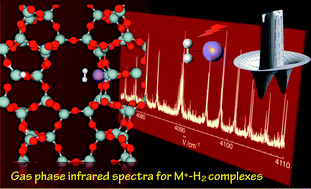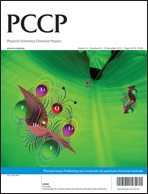Attaching molecular hydrogen to metal cations: perspectives from gas-phase infrared spectroscopy
Abstract
In this perspective article we describe recent infrared spectroscopic investigations of mass-selected M+–H2 and M+–D2 complexes in the gas-phase, with targets that include Li+–H2, B+–H2, Na+–H2, Mg+–H2, Al+–H2, Cr+–D2, Mn+–H2, Zn+–D2 and Ag+–H2. Interactions between molecular hydrogen and metal cations play a key role in several contexts, including in the storage of molecular hydrogen in zeolites, metal–organic frameworks, and doped carbon nanostructures. Arguably, the clearest view of the interaction between dihydrogen and a metal cation can be obtained by probing M+–H2 complexes in the gas phase, free from the complicating influences of solvents or substrates. Infrared spectra of the complexes in the H–H and D–D stretch regions are obtained by monitoring M+ photofragments as the excitation wavelength is scanned. The spectra, which feature full rotational resolution, confirm that the M+–H2 complexes share a common T-shaped equilibrium structure, consisting essentially of a perturbed H2 molecule attached to the metal cation, but that the structural and vibrational parameters vary over a considerable range, depending on the size and electronic structure of the metal cation. Correlations are established between intermolecular bond lengths, dissociation energies, and frequency shifts of the H–H stretch vibrational mode. Ultimately, the M+–H2 and M+–D2 infrared spectra provide a comprehensive set of benchmarks for modelling and understanding the M+⋯H2 interaction.


 Please wait while we load your content...
Please wait while we load your content...